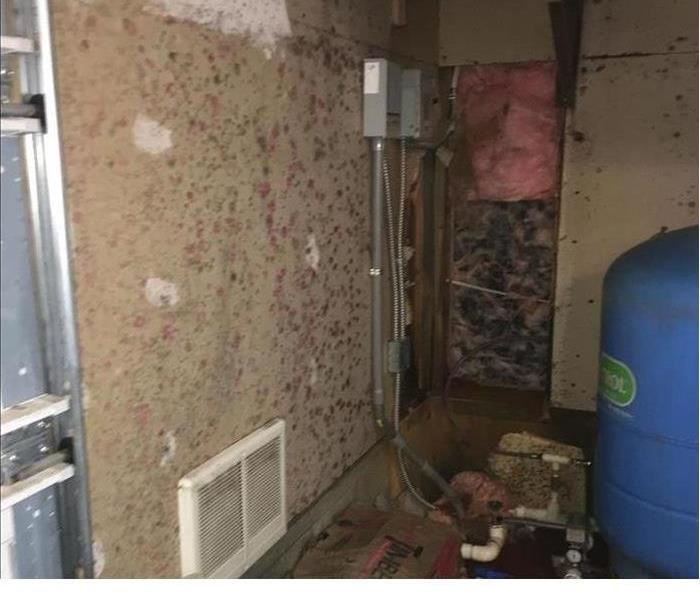Recent Mold Remediation Posts
Mold Remediation Process
3/4/2022 (Permalink)
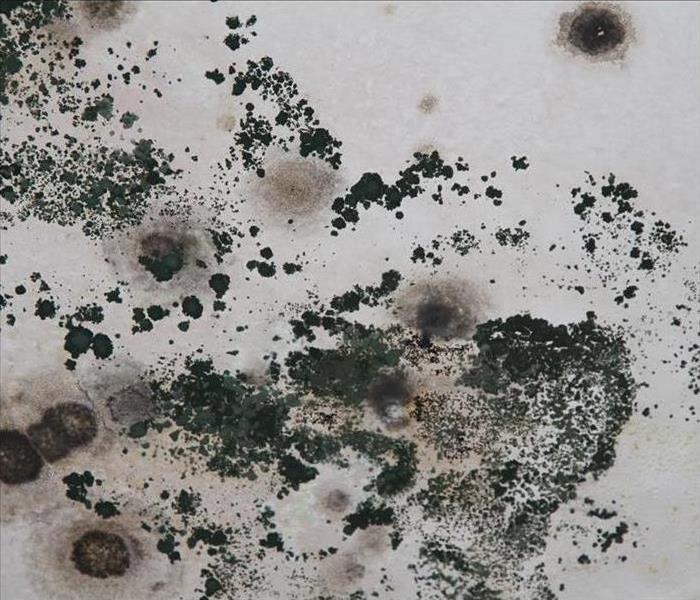 Call the mold experts, we're Here To Help!
Call the mold experts, we're Here To Help!
What’s the Difference?
Since microscopic mold spores exist naturally almost everywhere, indoors and outdoors, removing all mold from a home or business is impossible. Many restoration businesses advertise “mold removal” and even guarantee to remove all mold. This is a fallacy. We understand mold and mold growth. SERVPRO of W. Vancouver / Clark Co. has the training and expertise to remediate the mold in your home or business.
Understanding Mold
When water intrudes into your property, mold growth can start in as little as 48 hours. Consider the following mold facts:
- Mold is present almost everywhere, indoors and outdoors.
- Mold spores are microscopic, float along in the air, and may enter your home through windows, doors, or AC/heating systems or even hitch a ride indoors on your clothing or a pet.
- Mold spores thrive on moisture. Mold spores can quickly grow into colonies when exposed to water. These colonies may produce allergens and irritants.
- Before mold remediation can begin, any sources of water or moisture must be addressed. Otherwise, the mold will likely return.
- Mold often produces a strong, musty odor, and that odor can lead you to possible mold problem areas.
- Even higher-than-normal indoor humidity can support mold growth. Keep indoor humidity below 45 percent.
The Mold Remediation Process
Every mold damage scenario is different and requires a unique solution, but the general mold remediation process stays the same. Learn more about our mold remediation process.
- Emergency Contact - (360) 254-0049
- Inspection and Mold Damage Assessment
- Mold Containment
- Air Filtration
- Removing Mold and Mold-Infested Materials
- Cleaning Contents and Belongings
SERVPRO’s Standard Mold Damage Remediation
3/8/2021 (Permalink)
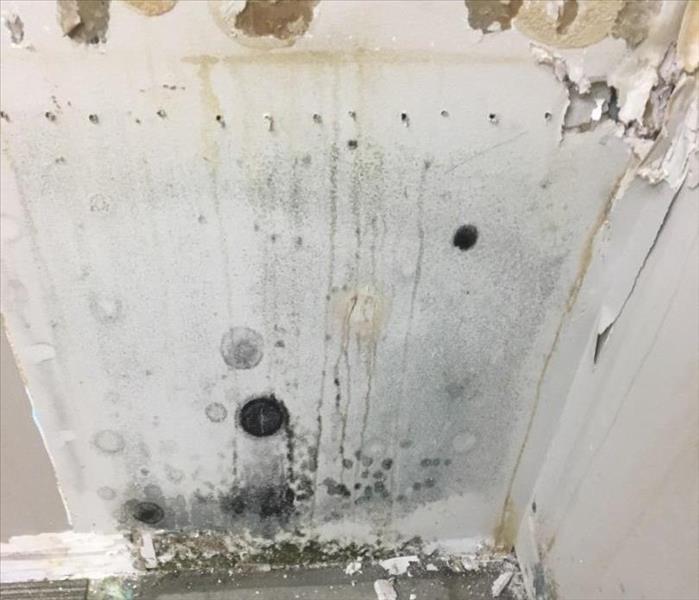 If a preexisting water damage in your Clark County home has caused mold--Call SERVPRO for Remediation.
If a preexisting water damage in your Clark County home has caused mold--Call SERVPRO for Remediation.
Getting rid of mold can be a frustrating task. If you attempt to do it yourself, expect to get plenty of conflicting advice. Without any forewarning, the mold can reappear or show up in another area of your home. Mold remediation is a job we train for and improve our practice with every project we take on. Let us help you with your mold problem.
When our mold damage remediation crew arrives at your Clark County home, our project manager takes a close look not only at the mold you located but also for any evidence of past or present water intrusion or damage. Mold spores require a source of moisture to grow and multiply, so finding the water pathways helps us find not only the visible mold but also leads us to other places, often in recessed areas, where mold is growing. Failing to remove all active mold growth risks a fast recurrence.
SERVPRO follows the Environmental Protection Agency (EPA) protocols for mold remediation. After we determine the extent of the mold damage, we take steps to contain the area. Crew members set up physical barriers with heavy plastic sheeting, and also employ negative pressure air scrubbers in more severe cases to prevent drift of moldy debris into unaffected areas of your home. The air scrubbers use HEPA filters to catch airborne residues and a suction-like process to keep all contained. Our crew members wear personal protective gear in the containment area for their own safety and to limit the tracking of moldy materials into other areas.
Once containment is in place, the SERVPRO technicians use primarily mechanical means to remove the mold. Scraping plus spray and wipe techniques work well for solid, non-porous surfaces. Heavily infested porous materials might need to be cut out and removed, but we also have success using abrasive techniques like soda blasting to remove mold hyphae even from porous surfaces. This method works very well on raw timber found in attics and crawlspaces.
Our technician’s bag the mold debris, including building materials removed because of severe contamination, and dispose of them according to local hazardous waste rules. SERVPRO then vacuums up the remaining debris and treats the affected areas with EPA registered antimicrobial products to inhibit future mold growth. We strongly advise the moisture issues that fuel the mold growth be resolved as we cannot promise to remove all mold spores.
When seeking out a reliable mold remediation firm in Pleasant Grove, you cannot go wrong with the work ethic and skill of SERVPRO of West Vancouver/ Clark County. Call us at (360) 254-0049 for a consultation and remediation plan if you even suspect mold growth in your home.
Tips For Controlling Mold Damage in Your Ridgefield Home
3/13/2020 (Permalink)
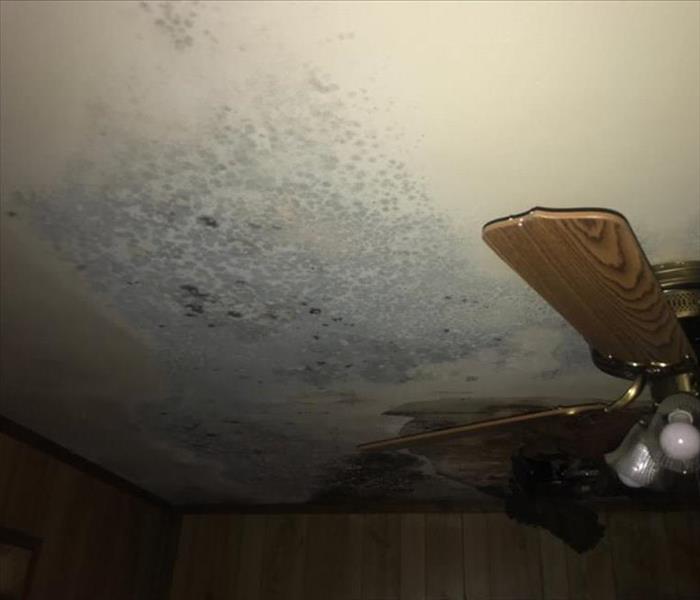 SERVPRO of Vancouver/Clark County helps prevent and reverse the spread of mold damage. Call our experienced team 24/7 at (360) 254-0049
SERVPRO of Vancouver/Clark County helps prevent and reverse the spread of mold damage. Call our experienced team 24/7 at (360) 254-0049
Call your locall SERVPRO professionals at the first sign of mold.
Keeping Mold Out of the Home in Paradise Valley
Even in the hottest, driest parts of the year, mold damage can still affect Ridgefield homes. Safeguarding your home against mold infestations might not be an easy feat, but it is one that can save you thousands of dollars in restoration and repair costs later on in life. When things go wrong, and mold gains ground in your home, SERVPRO professionals are there to help, but before that day comes to pass (or after we finish our remediation work), there are some things that you can do to help keep your home free of spores.
Control the Water
With so many species of mold in the Pacific Northwest, the damage to your Ridgefield home can develop into a substantial problem. Mold spores, like other living things, require both food and water to grow and reproduce. When a leak springs somewhere in the home or a flood soaks the floor of a room, these events can give opportunistic mold spores the chance to start growing and spreading in your home. Keeping your plumbing in good working order is the single most crucial step towards a mold-free home.
Take Care of Problems Immediately
If mold does start to grow in your home, you should never wait to call a certified remediation company. Depending on how quickly you discover the mold, we can take non invasive measures at a relatively inexpensive cost to you. However, just a single day can give many species of mold the opportunity to grow exponentially and require much more time and cost intensive safety and cleanup procedures. Early warning signs of mold growth include discoloration around a moist area or an unusual white patch on a surface somewhere in the home.
Three Situations When Mold Growth is Covered by Insurance
3/14/2019 (Permalink)
 Fungus in crawl space in a Sara,WA home
Fungus in crawl space in a Sara,WA home
Ocassions When You Can Expect Your Insurance to Pay for Mold Damage
If you have discovered a fungus growth in your Sara, WA home, you might be wondering whether your homeowner’s insurance will cover this type of damage. The answer is sometimes. While mold is generally not covered under this kind of policy, there are exceptions. Here are a few occasions when you can expect your insurance to pay for mold damages.
1. When It Is Caused By a Covered Peril
Mold coverage often depends on the source of the growth. Damage caused by something that your insurance already covers will likely be included. Incidents such as broken pipes caused by freezing, overflow related to appliances or plumbing and water damage caused by snow, sleet or ice will usually be covered. If the water damage is caused by a flood, however, this will generally not be covered unless you have a flood policy.
2. When It is Sudden and Accidental
While your insurance policy may cover mold in some cases, this only applies if the damage was not caused by negligence on your part. If a pipe breaks because it was not properly maintained or if you fail to notice the damage until quite a bit of time has passed, then the insurance company may determine that the fungus growth is a result of improper home maintenance and they will refuse to cover it.
3. When You Have a Separate Mold Policy
In some cases, you may be able to have separate mold insurance added to your policy for an additional cost. Some companies might limit the amount of mold damage you can claim or the services that are included, but this is better than no coverage at all.
If you are concerned about a fungus growth in your home, it is a good idea to hire a professional mold remediation service. In some cases, the cost will be covered by your insurance. Always be sure to regularly maintain your home and check for damages to prevent the coverage from being denied by your insurer.
The Pros and Cons of HEPA Filters for Air Purification
1/25/2019 (Permalink)
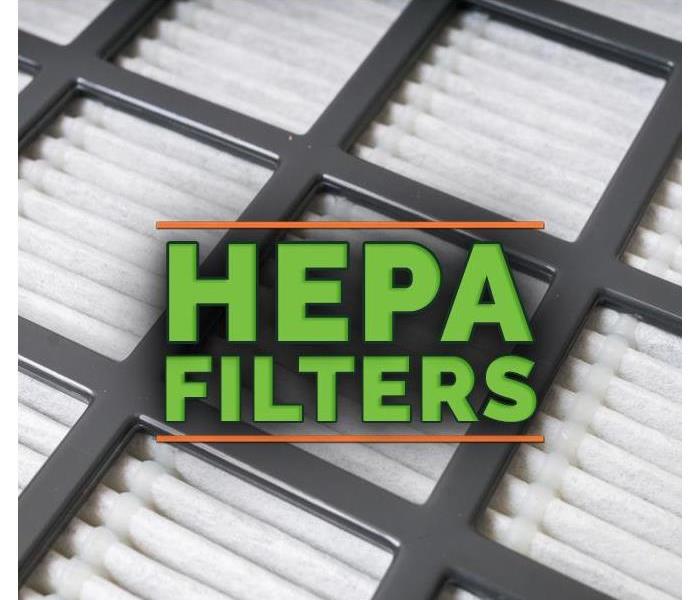 HEPA filters are rated to remove 99.9% of particles 0.3 microns in size from the air that passes through
HEPA filters are rated to remove 99.9% of particles 0.3 microns in size from the air that passes through
By now, you’ve likely heard of the benefits of using air filtration in your home located in Felida, WA, to rid of mold that has made its way into the air you breathe. Many people choose to use air purifiers that are equipped with HEPA (High Efficiency Particulate Air) filters to rid of mold spores floating around. While these filters are often very efficient at completing this purpose, they can become problematic if not cared for correctly.
Applications of HEPA Filters
HEPA filters are used in several different settings including:
- Home purifiers
- Vacuum cleaners
- Hospitals
- Airplanes
- Tesla Model X
How a HEPA Filter Works
An air purifier with a HEPA filter cleans the air of mold by catching particles that are in your home. These filters are effective 99.97 percent of the time since they can only catch particles that are 0.3 microbes are larger. However, a large majority of spores are between 1 to 30 microbes in size, so only unusually small particles are able to get by undetected.
The Cons of a HEPA Filter
While a HEPA filter is considered to be an effective means of air filtration, there are a couple of cons to consider:
- When not cleaned regularly, mold can grow on your HEPA filter and be emitted into the air
- Unlike some other types of filters that are able to kill mold, HEPA filters only trap them.
- A HEPA filter cannot trap very small mold spores.
When a HEPA Filter Isn’t Enough
It is important to remember that an air purifier only removes mold spores from the air inside your home and does not tackle mold growth problems within your home. To address a serious mold issue, you will need to contact a mold restoration specialist.
No one wants to have mold spores floating around in their home, which is why air filtration is so beneficial. HEPA filters are especially effective at purifying your air. Just make sure you replace them regularly to avoid unnecessary mold growth!
Prevention of Mold issues
9/27/2018 (Permalink)
Effective prevention of mold problems information:
The primary physical damage from water or moisture usually includes wet floorings, walls, ceilings, and furnishings. Secondary damage to other furnishings and structural components can result from indoor humidity or molds that may developed as a result of improper drying. If water and moisture problems are not addressed promptly, molds and other microbes can begin to grow. These microorganisms can feed on a variety of materials including wood, paper, paint, adhesives, and backing materials.
Proper, prompt water mitigation is essential in preventing mold and additional damage from a water loss. So if the unthinkable happens, please call SERVPRO @ 360-254-0049 so we can turn your tramatic "before" into a "happily ever after" ... "Like it never even happened."
SERVPRO W. Vancouver/Clark Co.
How To Know If You Have Mold Coverage
9/12/2018 (Permalink)
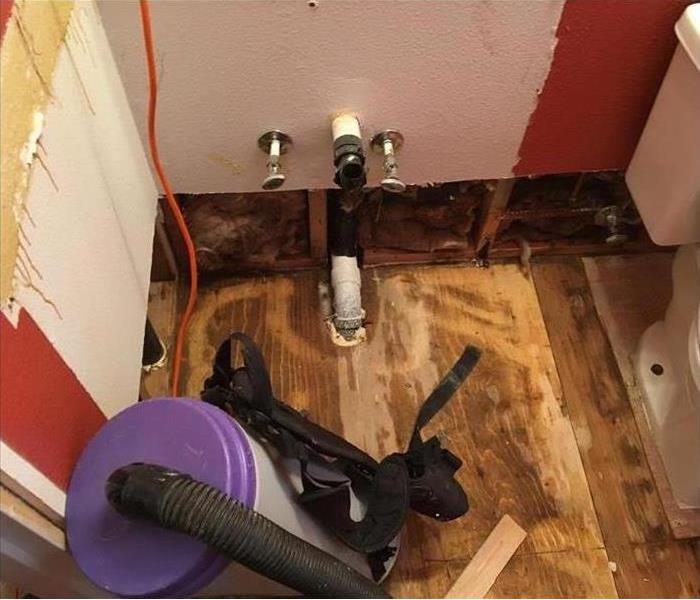 Mold remediation in Vancouver, WA
Mold remediation in Vancouver, WA
How To Know If You Have Mold Coverage
If you rent your home in Vancouver, WA, sometimes the lines between the damages the property owner's insurance and the problems your own rental insurance covers get blurred. When it comes to mold damage, the responsibility for remediation services can be determined by answering a few key questions.
1. Did you know about it? Insurance companies expect their policyholders to be observant and responsible. If you know about a mold problem and you let it get out of hand, the insurance company is probably not going to cover the cost of mold removal. If, on the other hand, there is no way you could know that the damage exists, the expenses are likely to be covered by either the owner's property policy or your rental insurance.
2. Did you do something about it? The next step after knowledge is action. If you know there is a problem, and you do not report it or do nothing to fix it, you are going to have a hard time convincing your insurance company that you deserve compensation for the repairs. If, however, you reported the problem as soon as you discovered it, your agent is more likely to be willing to work with you to see if you can get money to pay for remediation.
3. Does your policy specifically mention mold? Most renters' insurance policies typically cover only the policyholder's belongings. The mold on the wall caused by high humidity, therefore, probably falls under your landlord's responsibility and thus his or her insurance. If the property owner doesn't fix the problem, however, you may be at a disadvantage. This is a time when it's good to have a specific mold clause in your policy to cover you in circumstances where the property owner refuses to do so.
In general, damage to your personal items is your responsibility, while damage to the building falls under the property owner's tasks. It's important to know what is and is not covered by your policy.
Prevention of Mold Issues
6/29/2018 (Permalink)
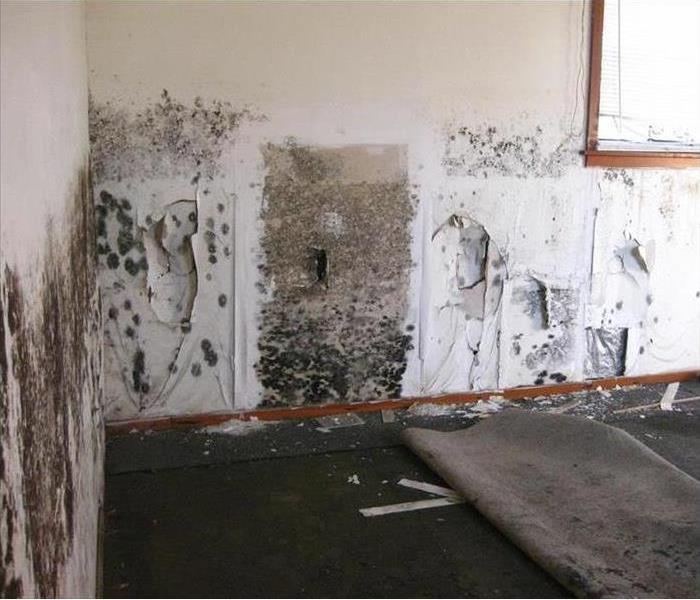 Nobody wants to come across this in their home or office, contact your SERVPRO of Vancouver & Clark Co. experts today! (360) 254-0049
Nobody wants to come across this in their home or office, contact your SERVPRO of Vancouver & Clark Co. experts today! (360) 254-0049
Effective prevention of mold problems information:
The primary physical damage from water or moisture usually includes wet floorings, walls, ceilings, and furnishings. Secondary damage to other furnishings and structural components can result from indoor humidity or molds that may developed as a result of improper drying. If water and moisture problems are not addressed promptly, molds and other microbes can begin to grow. These microorganisms can feed on a variety of materials including wood, paper, paint, adhesives, and backing materials. Proper, prompt water mitigation is essential in preventing mold and additional damage from a water loss. So if the unthinkable happens, please call SERVPRO @ 360-254-0049 so we can turn your tramatic "before" into a "happily ever after" ... "Like it never even happened."
SERVPRO W. Vancouver/Clark Co.
How To Stop Mold From Coming Back
5/16/2018 (Permalink)
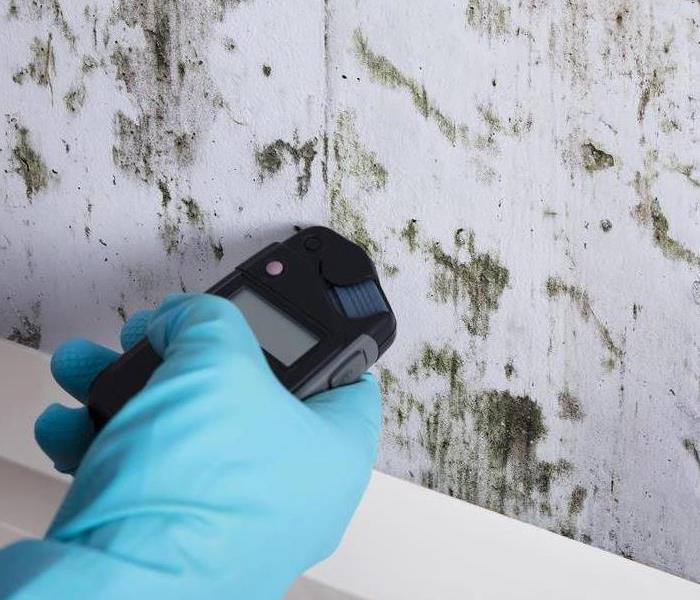 When you hire a mold expert in Vancouver, WA, they will do more than remove black mold from your home.
When you hire a mold expert in Vancouver, WA, they will do more than remove black mold from your home.
If you have a patch of black mold that keeps growing back after you scrub it off, you may be wondering what you’re doing wrong. It can be even more frustrating if you’ve hired someone to handle the mold cleanup for you and it still grows back. The fact is, if you have a reoccurring mold problem, you have a problem with too much moisture in the affected area. An experienced mold remediation expert in Vancouver, WA, should be able to help you pinpoint the source of your moisture problem so that you can put an end to it.
Why and Where Mold Thrives
Mold releases spores, which are like tiny seeds that get carried from place to place by the wind. Mold spores can be found everywhere, outside and inside, so it’s impossible to completely remove all mold from your home. However, if spores don’t find the right growing conditions, they never grow into a visible mold colony. The key to keeping your home free from black mold is to make sure you don’t create the ideal conditions for it to grow.
Because spores are everywhere, mold only needs moisture and nutrition to grow. Most mold species can get nutrition from almost anything, including the paper in your drywall and the dust in the corners of your home. That means any area that is consistently damp is likely to grow mold. The most common sources of chronic moisture problems are the following.
• Poor ventilation
• Condensation
• Leaking roofs and windows
• Broken supply lines
• Leaking water pipes
Get Rid of Mold Forever
When you hire a mold expert in Vancouver, WA, they will do more than remove black mold from your home. They’ll also help you make sure it doesn’t return. With the use of hydrometers and infrared light, they can locate the hidden sources of moisture responsible for your mold problem. They also know how to open up walls to get at leaking pipes without doing unnecessary damage. Once you repair, replace or remove the source of dampness in your home, the mold won’t return. For more information, visit http://www.SERVPROwvancouverclarkco.com/.
Should Your Building Be Inspected for Mold?
4/30/2018 (Permalink)
You’ve finally found it: the perfect building for your needs. And you’ve got big plans for it. Take out a wall here, move the staircase over there, add a window over here. Your imagination is going wild, but before you get ahead of yourself, you need to be sure that this “perfect” building is actually perfect. The financials are all in order; the seller has accepted your offer and all that’s left is the building inspection. As you walk through with the inspector, paint colors and potential furnishings floating through your mind, the inspector points out some visible mold, and your questions about interior design are suddenly replaced with questions about mold. Do you need a mold inspection?
Signs of Potential Mold
Mold inspections in Vancouver, WA can be expensive, as can mold remediation. However, mold grows fast, and it can stealthily and silently wreak havoc behind the scenes of your otherwise perfect building. Visible black, gray or green spots on the walls, ceiling or floor clearly indicate a mold problem, and an inspection can help you determine the extent of the damage and put together a plan. But mold isn’t always obvious. Other signs of mold include:
- Discolored ceiling tiles, walls or floors, which may point to a leak or past water damage
- Buckled or warped flooring
- Evidence of past plumbing problems: for example, a missing sink or toilet.
- A strong musty or mildew smell.
Mold Remediation
If any of these indicators are present, it’s a good idea to schedule a mold inspection. Some mold problems are fairly easy to mitigate with antifungal and antibacterial treatments. Others may require advanced mold containment procedures and/or the removal of infested porous surfaces like carpet and drywall. In any case, evaluating potential mold problems before completing your building purchase will provide peace of mind and prevent complications down the road. Then, you can get back to the important business of making your vision of the perfect building a reality.
For more information, please visit us athttp://www.SERVPROwvancouverclarkco.com/.
Best Ways To Handle Mold Issues in Your Home
3/29/2018 (Permalink)
Anyone who has ever had flooding at home knows the severe problems this can cause. Water damage often leads to the growth of mold, and though you can take measures to prevent water problems in your basement or other parts of your home, it’s not always easy to keep this invader at bay. If you do see mold growth at home, you need to use effective steps to get rid of this pest or to effectively control it.
Fix the Leaks
Anyone who has a home in Vancouver, WA, has likely had a few occasions where he or she has identified leaky pipes or widows. It’s not uncommon, either, to detect leaks in your roof, especially in older homes. Though you may be tempted to put off repairing these items, procrastination can eventually lead to significant water damage. Small leaks can build up over time, sometimes without you even noticing it.
Clean the Right Way
Flood cleanup can be time consuming and costly, but proper cleaning is one of the best ways to promote mold prevention. Make sure you dry the affected area thoroughly. You should also clean moldy areas by doing the following:
• Use soap and water.
• Use a bleach solution with one cup of laundry bleach with one cup of water.
• Don’t not use ammonia with bleach.
Use Proper Ventilation
The laundry room can be one of the biggest culprits for mold growth. This shouldn’t be a problem area, however, if you have the right vents in place and keep them free of clogs or obstructions. Also, consider opening a window if you start to smell mildew.
Though water damage affects many homeowners, it doesn’t have to cause widespread, costly damage in your Vancouver, WA, home. Use these tips to protect your family and to keep your home safe.
For more information, visit us at http://www.SERVPROwvancouverclarkco.com/.
What Is Black Mold?
10/4/2017 (Permalink)
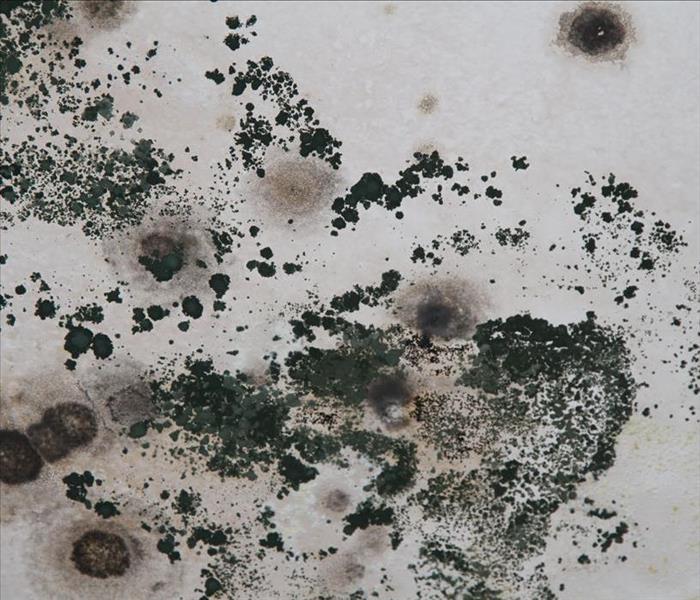 If you suspect you have a mold problem, contact SERVPRO of W. Vancouver / Clark Co. immediately.
If you suspect you have a mold problem, contact SERVPRO of W. Vancouver / Clark Co. immediately.
You may have seen sensational news reports that warn about the dangers of “black mold” or “toxic mold”. These reports can be alarming and confusing so it’s beneficial to get the facts to better understand mold.
Stachybotrys chartarum is the type of mold often called black mold, and it does produce allergens and irritants. However, many types of mold can produce allergens and irritants. Treat any mold with caution – stay out of affected areas and don’t touch or disturb the mold.
Learn more about mold and what to do until help arrives by visiting Mold Damage Tips.
How Do I Tell If It’s Black Mold?
Since many types of mold can cause reactions, you should contact us regardless of the color or type of mold. In many instances, multiple types of mold may exist in the same house or structure. If you suspect you have a mold problem, contact SERVPRO of W. Vancouver / Clark Co. immediately.
Understanding Mold
When water intrudes into your property, mold growth can start in as little as 48 hours. Consider the following mold facts:
- Mold is present almost everywhere, indoors and outdoors.
- Mold spores are microscopic, float along in the air, and may enter your home through windows, doors, or AC/heating systems or even hitch a ride indoors on your clothing or a pet.
- Mold spores thrive on moisture. Mold spores can quickly grow into colonies when exposed to water. These colonies may produce allergens and irritants.
- Before mold remediation can begin, any sources of water or moisture must be addressed. Otherwise the mold may return.
- Mold often produces a strong, musty odor, and that odor can lead you to possible mold problem areas.
- Even higher-than-normal indoor humidity can support mold growth. Keep indoor humidity below 45 percent.
Quick Response & Proper Drying = No Mold
9/11/2017 (Permalink)
 Don't be a victim to mold damage, call SERVPRO today!
Don't be a victim to mold damage, call SERVPRO today!
The last thing you hope to ever worry about is "Mold."
The primary physical damage from water or moisture usually includes wet floors, walls, ceilings and furnishings.
Secondary damage to other furnishings and structural components can result from indoor humidity or molds that may develop as a result of improper drying. If water and moisture problems are not addressed promptly, molds and other microbes can begin to grow. These microorganisms can feed on a variety of materials including wood, paper, paint, adhesives and backing materials. Proper and prompt water mitigation is essential in preventing mold and additional damage from a water loss.
So if the unthinkable happens, call SERVPRO so we can turn your traumatic before into a happily ever after. "Like it never even happened." Inspections are scheduled as an appointment. Be proactive instead of reactive. If mold is present, time can be your enemy.
Please call SERVPRO of W. Vancouver/Clark Co. @ (360) 695-4418
Mold Damage can Signal Ongoing Water Leaks
6/26/2017 (Permalink)
 SERVPRO of W. Vancouver / Clark Co. is available 24/7. You can call us at (360) 695-4418, and we respond quickly.
SERVPRO of W. Vancouver / Clark Co. is available 24/7. You can call us at (360) 695-4418, and we respond quickly.
Mold Remediation and Water Fixes are Interrelated
Mold takes a while to grow, but visible signs of mold can seem to happen overnight, too. When you have found multi-colored circles on the ceiling or black streaks and patches on your walls, there can be no doubt that there is mold damage in other areas of your home. SERVPRO of W. Vancouver / Clark Co. can help locate other areas affected by mold before damage increases in severity.
Water, needed by mold and other fungi to grow, does not need to have outside sources when there is water dripping from a water line somewhere in your home. Mold only needs a tiny amount of water moisture to begin spreading through your home. Dormant spores spring to life with moisture. Technicians at SERVPRO of W. Vancouver / Clark Co. use moisture meters, infrared sensors, and other devices to detect where water sources are located. Then we repair any dripping lines, preventing any more moisture to accumulate. Mold remediation can begin once the sources have been eliminated.
Lines can leak anywhere, but joints are a common spot for this to happen. If there is a tiny hole or small crack in a line, water could be spraying the inside of your wall, which can allow water to seep into areas that may seem uncontaminated by mold damage because the mold growth is not visible.
Water loss in a home from dripping lines may cause other problems with secondary water damage besides mold, so SERVPRO of W. Vancouver / Clark Co. checks for signs of these, also. Repairing lines that leak can also decrease your water bill, in addition to protecting your home from mold damage. Fungi must have a water source for growth to take place, and spots, streaks, and patches signal not only mold damage, but the presence of water where it should not be. We can make it "Like it never even happened” and decrease the risk of any future mold growth at the same time.
We know that mold damage can be a scary situation in your home, so SERVPRO of W. Vancouver / Clark Co. is available 24/7. You can call us at (360) 695-4418, and we respond quickly.
Defending Against Mold Growth
5/30/2017 (Permalink)
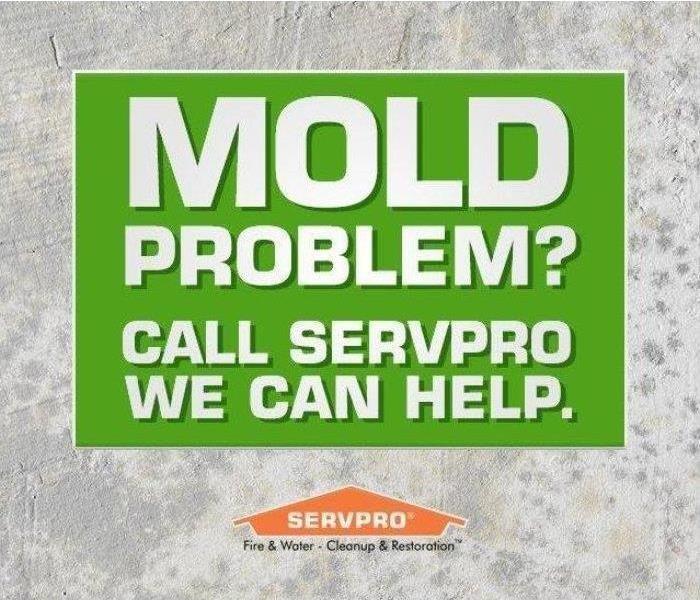 Are you experiencing water or mold damage? Contact SERVPRO of W. Vancouver & Clark Co. today! (360) 695-4418
Are you experiencing water or mold damage? Contact SERVPRO of W. Vancouver & Clark Co. today! (360) 695-4418
When you experience a mold problem, prompt mitigation is vital to avoid mold growth which can be visible in as little as 24 to 48 hours under certain conditions. We have put together a list of procedures that will help prevent and defend against mold growth.
- Keep the humidity between 30 to 60 percent.
- Provide for proper drainage away from building foundations.
- Regularly inspect plumbing and appliances for leaks.
- Keep gutters and drains clear of debris.
- Inspect the roof, windows and other areas where water might enter the building, and perform necessary maintenance.
- Respond to all water intrusions immediately.
- Contact SERVPRO of W. Vancouver & Clark Co. for professional assistance after water damage or if you discover mold.
Are you experiencing water or mold damage? Contact SERVPRO of W. Vancouver & Clark Co. today! (360) 695-4418
“Mold Removal” vs. Mold Remediation
5/30/2017 (Permalink)
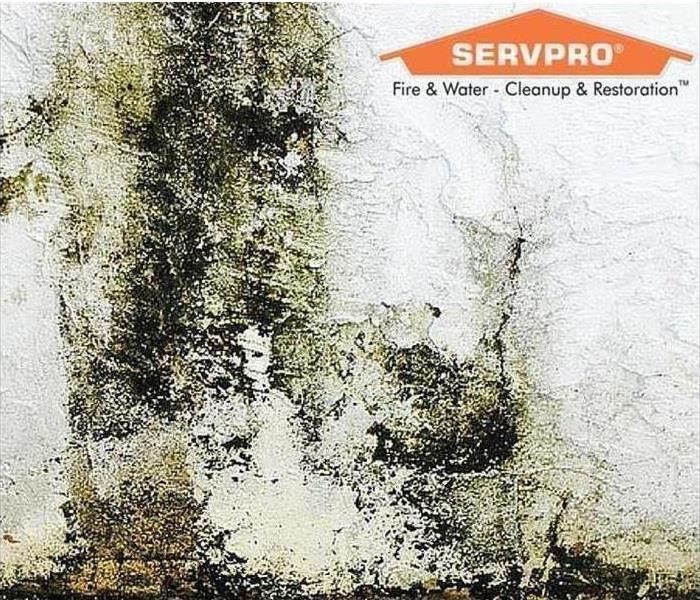 Signs of Mold? Call Today – (360) 695-4418
Signs of Mold? Call Today – (360) 695-4418
What’s the Difference?
Since microscopic mold spores exist naturally almost everywhere, indoors and outdoors, removing all mold from a home or business is impossible. Many restoration businesses advertise “mold removal” and even guarantee to remove all mold. This is a fallacy. We understand mold and mold growth. SERVPRO of W. Vancouver / Clark Co. has the training and expertise to remediate the mold in your home or business.
Understanding Mold
When water intrudes into your property, mold growth can start in as little as 48 hours. Consider the following mold facts:
- Mold is present almost everywhere, indoors and outdoors.
- Mold spores are microscopic, float along in the air, and may enter your home through windows, doors, or AC/heating systems or even hitch a ride indoors on your clothing or a pet.
- Mold spores thrive on moisture. Mold spores can quickly grow into colonies when exposed to water. These colonies may produce allergens and irritants.
- Before mold remediation can begin, any sources of water or moisture must be addressed. Otherwise, the mold may return.
- Mold often produces a strong, musty odor, and that odor can lead you to possible mold problem areas.
- Even higher-than-normal indoor humidity can support mold growth. Keep indoor humidity below 45 percent.
The Mold Remediation Process
Every mold damage scenario is different and requires a unique solution, but the general mold remediation process stays the same. Learn more about our mold remediation process.
- Emergency Contact - (360) 695-4418
- Inspection and Mold Damage Assessment
- Mold Containment
- Air Filtration
- Removing Mold and Mold-Infested Materials
- Cleaning Contents and Belongings
How to Prevent Mold
4/27/2017 (Permalink)
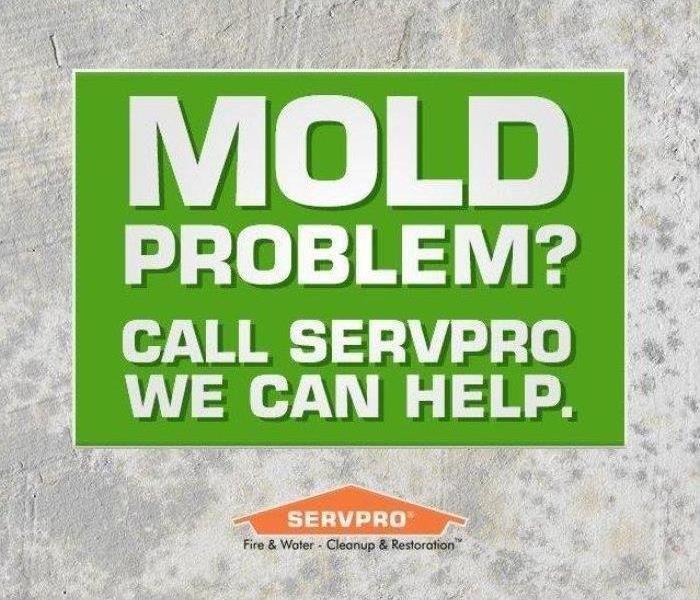 For questions or to schedule an inspection call SERVPRO of W. Vancouver Clark Co. @ (360) 695-4418
For questions or to schedule an inspection call SERVPRO of W. Vancouver Clark Co. @ (360) 695-4418
The main things mold needs to grow in a home are organic materials to feed on and moisture. In houses there are always plenty of organic materials for mold to live on such as wood, drywall and various other building materials.
Moisture, on the other hand, can be controlled practically and so keeping the moisture in your home low is the best way to prevent mold growth.
Prevent Mold by Preventing Moisture
Most molds need 24-48 hours of moisture to begin to grow. Therefore if a suitable material in your home is wet for more than 24 hours then you run the risk of mold starting to grow.
Prevent Mold by Preventing Water Leaks
There are a few main things which usually cause moisture problems in the home. One is water leaks. These include things such as leaking roofs or walls, leaking pipes and leaking taps or a leaking shower.
If you know of any leaks in your home you should fix them without delay. You might need to inspect your home to find any water leaks you didn't know about.
Prevent Mold by Preventing Condensation
Condensation is another frequent cause of moisture. Condensation forms on cold surfaces when water vapor in the air cools and becomes liquid. Often you'll see condensation on metal pipes, concrete walls, water tanks and windows.
One way to reduce condensation is to keep the temperature warmer in rooms. For example, by installing insulation. You can also insulate the surfaces themselves such as putting coverings over metal pipes. You'll also have less condensation occurring if you keep the humidity in your home low.
Prevent Mold by Reducing Humidity
Many species of mold can begin to grow from humidity alone if the humidity stays high for long enough. In fact the humidity only needs to be higher than 55% before some molds can begin to grow.
The best way to keep humidity low in your home is through ventilation. Open the windows during the day, especially when it's hot since this is when humidity is usually the lowest outside. Close your windows when it's raining outside though.
It's especially important to ventilate the rooms where steam and moisture builds up, like the kitchen and bathroom. Exhaust fans help to reduce the humidity when doing things like cooking or washing dishes.
Air conditioners can also reduce household humidity, as can using dehumidifiers in your home.
For questions or to schedule an inspection call SERVPRO of W. Vancouver Clark Co. @ (360) 695-4418





 24/7 Emergency Service
24/7 Emergency Service







